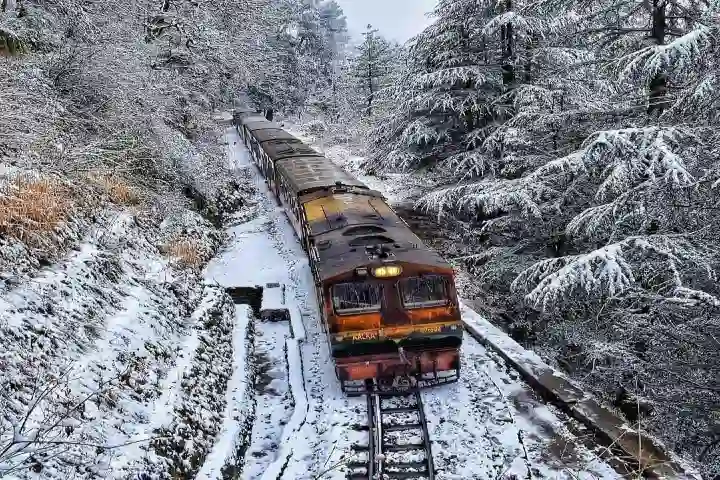The iconic 120-year-old Kalka-Shimla narrow gauge railway train is expected to start running its full course from October 1. This UNESCO World Heritage Site will become functional as its services had come to a standstill due to damages at 352 locations because of heavy rainfall causing flash floods and landslides in Himachal Pradesh.
Landslides on July 8 brought a large quantity of mud, boulders and trees on the tracks at 135 places. This was followed by damage to the track in August due to heavy rains. To revive the service after repairing the line, the Union Ministry of Railways had sanctioned Rs.15 crore.
UNESCO World Heritage Kalka Shimla Railway Line Shimla Station also could not escape from the grip of disaster. pic.twitter.com/OAfqbayLNw
— Rishu
(@Rishusharma26) August 23, 2023
Work on restoring the track started in July at the 352 damaged locations. Of these 327 have been already repaired and work is going on at the remaining 25. The section between the Jutogh and Summer Hill stations, just before Shimla, was washed away and the bridge there is being rebuilt by the railways.
Talking to the media, Mandeep Bhatia, the Divisional Railway Manager, Ambala said that they are expecting that the British era track would be ready till Shimla by September 30 and that the train service will resume from October 1. He added that the train services till Koti have already been started from September 5.
#WATCH | Soil underneath Kalka-Shimla railway line washed away following heavy rainfall in the area#HimachalPradesh pic.twitter.com/0UHvMDcnRw
— ANI (@ANI) August 15, 2023
Sharing details about the repair work he said that walls have been built at different locations to strengthen the railway line and longitudinal and cross drains are being constructed for this purpose. The authorities are also undertaking rock bolting and slope protection and tunnel grouting to save the track for disasters in future.
The 96-kilometre-long track on which the toy train runs has 18 stations, 102 tunnels and 988 bridges. It offers the passengers a majestic view as the route has breath-taking valleys, pine, oak, and deodar trees.
On July 8, 2008, this railway line was declared a UNESCO World Heritage Site.




















